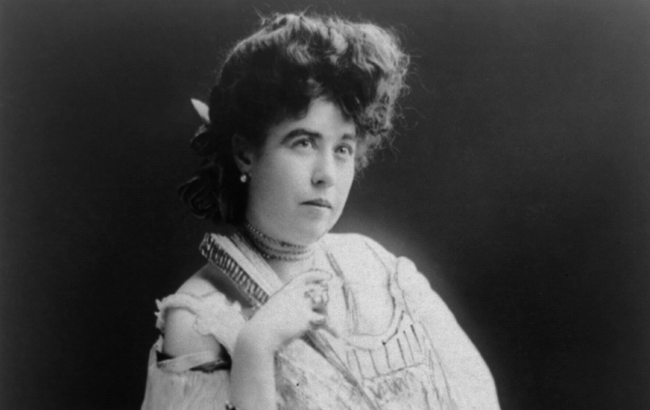A look at the life and legend of Colorado's own Molly Brown.
Our great state has a rich history, and the individuals who shaped that history deserves to be recognized. Which is why we've started a new series on Our Community Now titled Our Coloradans Then (see what we did there?) that dives into the lives and legends of historical figures that had an impact on the state of Colorado and its communities.
Today we'll be discussing none other than Margaret Brown, aka "The Unsinkable Molly Brown." Molly Brown survived the infamous sinking of the RMS Titanic, was a philanthropist and activist, and truly left her mark on the state of Colorado.
This is her story ...
Early Life
Born to Irish immigrants in 1867, Margaret (Maggie) Tobin lived her early years in Missouri and attended school until the age of 13. It was then that she was subjected to working in a factory, where she endured long days and low wages.
Then, at age 19, Maggie and her brother Daniel moved to Leadville, Colorado. There, she worked at a department store and became active in the Irish Catholic community. She also became involved in soup kitchens and various charities. Not a short time after she arrived in Leadville, she met a mining engineer by the name of James Joseph (J.J.) Brown, and the two got married on September 1, 1886. Soon after, the Browns had two children, Lawrence and Catharine Ellen.
They lived a simple, quiet life, and though they didn't have a lot of money, they were happy.
Striking Gold
In 1893, the family struck gold. Literally.
Through the discovery of gold in the Little Johnny Mine, which was where the Ibex Mining Co. was digging and the company that J.J. worked for, the Browns became rich practically overnight. The Little Johnny Mine brought in 135 tons of ore nearly every day, and J.J. received an eighth share of the mining company.
The newly-wealthy family moved to Denver and began to live the high-class life amongst the elites. They traveled, bought expensive clothing, and attended various social gatherings. Maggie learned several languages, began working for women's suffrage, continued to be involved in charities, ran for Senate, and even donated money to help with the construction of Denver's St. Mary's Academy and St. Joseph's Hospital.
J.J. and Maggie quietly separated in 1909, though they never officially divorced. According to the agreement, Maggie received a cash settlement and kept possession of the house on Pennsylvania Avenue (now Street).
Maggie continued to travel all across the world, which is how she ultimately found herself aboard the RMS Titanic in 1912.
"The Unsinkable Molly Brown"
Whilst on a trip to Egypt, news of her grandson falling ill had Maggie eager to return home, so she booked a passage on the first available ship, the RMS Titanic. The Titanic was a marvel at the time in terms of technology and innovation, and it claimed to be "practically unsinkable." Built by British White Star Lines, the $10 million ship weighed approximately 46,000 tons and stretched about 883 feet long.
We all, unfortunately, know the tragic story of the Titanic and know that the ship never reached its intended destination.
However, what you might not know is how Maggie received the nickname "The Unsinkable Mrs. Brown" (later "Molly Brown") after the tragedy of Titanic. Through her determination and strong will, Maggie helped fellow passengers off the sinking ship, and once they were rescued by another ship, Carpathia, her efforts to help others never ceased. Using her knowledge of foreign languages, she did her best to console those survivors who spoke little to no English. She even managed to get first-class passengers aboard the Carpathia to donate money for the less fortunate survivors, raising $10,000 by the time they docked in New York City.
Legend states that as she stepped off the Carpathia, she exclaimed, "Typical Brown luck. I'm unsinkable!"
Reality says differently, stating that the nickname was started by a gossip columnist for the Newport Herald. Brown was called a hero, and her story was shared across the country, shooting Maggie to nationwide fame.
Even after the sinking of the Titanic, Maggie traveled. She died on October 26, 1932, in New York City. And it wasn't until after her untimely death that she received the name Molly Brown.
Now, many of you have most likely visited the Molly Brown House Museum at one point in your life, whether it be on your own or as part of an elementary school field trip. If you haven't, we highly suggest you pay a visit. Not only does it allow you to retrace the infamous suffragette's steps, but it gives you the opportunity to experience a tangible piece of Colorado history.
For more information, please visit the museum's website.
What do you think? Have you visited the Molly Brown House in Denver before? Also, let us know which historical figure should we cover next in the comments below.
